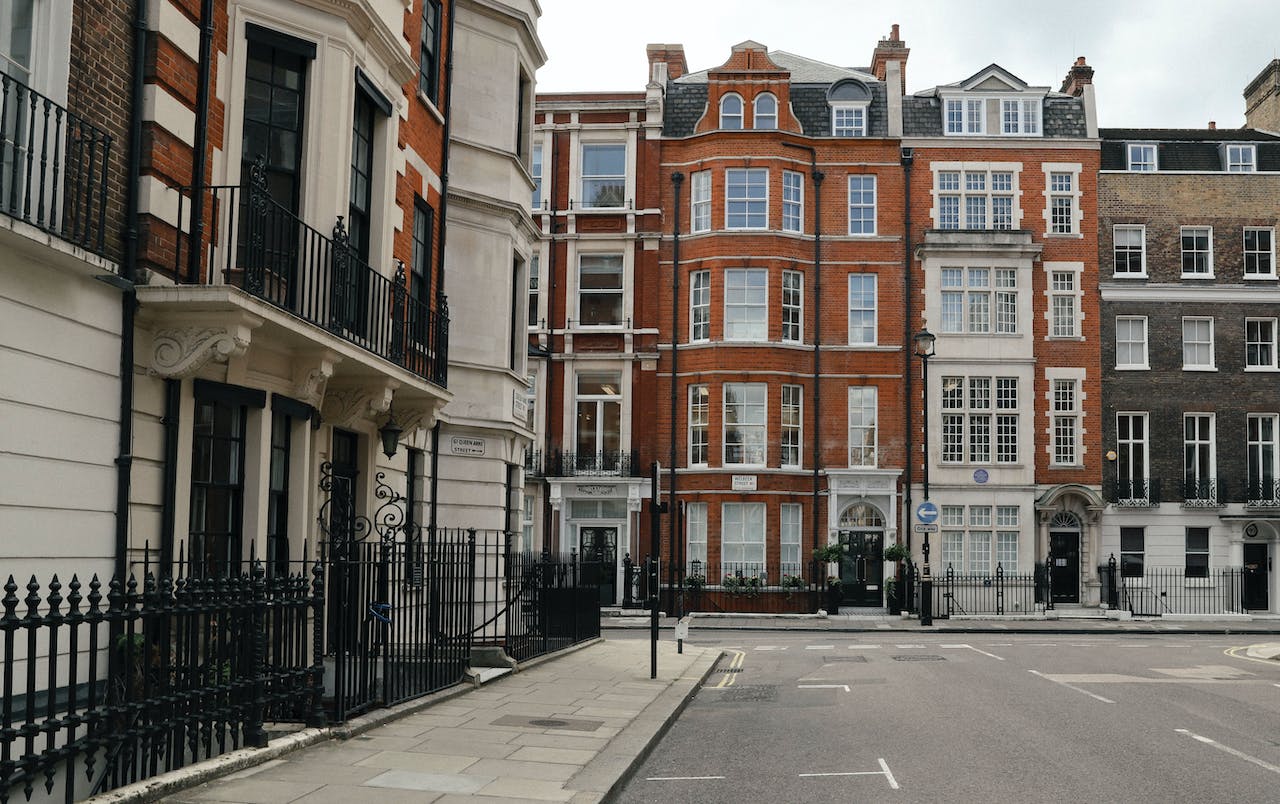In Retrofit by Robert Wheeler / 1 May 2024 / 0 comments

Retrofitting has emerged as a crucial solution in transforming the landscape of cities, and London is no exception. As a global hub of culture, commerce, and innovation, London faces the pressing challenge of reducing its carbon footprint while ensuring sustainable growth.
This blog post examines the concept of retrofitting in the context of London, exploring the need, benefits, challenges, and future opportunities associated with upgrading existing buildings. By delving into government initiatives, successful case studies, and potential trends, we aim to shed light on the vital role of retrofitting in optimizing energy efficiency, reducing environmental impact, and creating healthier living and working spaces in the bustling metropolis of London.
Introduction to Retrofitting in London
Understanding Retrofitting
Retrofitting is like giving a facelift to old buildings, making them more energy-efficient and environmentally friendly. It involves upgrading existing structures with modern technologies and materials to improve their performance and reduce their impact on the planet. In a city like London, where historical buildings coexist with modern architecture, retrofitting plays a crucial role in preserving heritage while meeting contemporary sustainability standards.
The Importance of Retrofitting in Urban Environments
Urban environments face unique challenges in terms of energy consumption and environmental impact. As cities grow, the strain on resources and infrastructure increases. Retrofitting existing buildings can help alleviate some of these pressures by reducing energy usage, enhancing indoor comfort, and decreasing carbon emissions. Additionally, retrofitting promotes a circular economy by extending the lifespan of structures and minimizing waste.
The Need for Retrofitting in London
Environmental Impact of Existing Buildings
London’s architectural wonders are not immune to environmental concerns. Many of the city’s buildings were constructed before sustainable practices became the norm. These older structures often lack proper insulation, have inefficient heating systems, and contribute significantly to greenhouse gas emissions. Retrofitting is an essential tool for mitigating these environmental impacts and transforming these buildings into efficient, eco-conscious spaces.
Energy Efficiency and Carbon Emissions Reduction
Improving energy efficiency is a key focus in retrofitting London’s buildings. By upgrading insulation, replacing outdated equipment, and incorporating renewable energy sources, buildings can reduce their energy consumption, lower utility bills, and decrease carbon emissions. Retrofitting also aligns with the city’s commitment to achieving net-zero carbon emissions by 2050, making it a vital step towards a greener future.
Government Initiatives and Policies for Retrofitting
National and Local Government Programs
Recognizing the importance of retrofitting, the UK government has established various programs to support these endeavors. Initiatives like the Green Deal and the Energy Company Obligation (ECO) provide funding and incentives for retrofitting projects. Local authorities in London also offer grants and guidance to encourage building owners to embrace sustainable retrofitting practices.
Incentives and Funding Options
Financial barriers often deter building owners from retrofitting projects. To overcome this obstacle, there are several funding options available. These include green loans, tax incentives, and grants that can significantly offset the upfront costs of retrofitting. The long-term savings on energy bills and potential increases in property value make retrofitting a worthwhile investment.
Challenges and Obstacles in Retrofitting London’s Buildings
Architectural and Structural Constraints
One of the challenges faced in retrofitting London’s buildings is working within the constraints of historical architecture. Preserving the character and integrity of these structures while implementing modern energy-efficient technologies requires careful planning and expertise. The design and engineering teams must strike a balance between preserving heritage and achieving sustainability goals.
Financial Barriers and Return on Investment
Retrofitting projects often require significant upfront investment, which can deter building owners from taking action. Despite the long-term financial benefits, the initial costs can be daunting. Demonstrating a positive return on investment through reduced energy bills and enhanced property value is crucial in convincing building owners to undertake retrofitting projects. Government incentives and funding options mentioned earlier can help alleviate this obstacle. Remember, retrofitting is an investment in the future that pays dividends in terms of energy savings and a more sustainable built environment.
So, whether you’re a building owner or a concerned citizen, retrofitting is a viable solution to reduce London’s carbon footprint, improve energy efficiency, and preserve the city’s architectural heritage. It’s time to embrace the retrofit revolution and make London a greener and more sustainable place to live and work.
Benefits and Advantages of Retrofitting in London
Retrofitting may sound like a fancy word, but it simply means improving existing buildings to make them more energy-efficient and comfortable. And in a city like London, where buildings have stood for centuries, retrofitting is a crucial step towards a sustainable future. Here are some benefits and advantages of retrofitting in London:
Energy Cost Savings and Building Performance
Let’s face it, energy costs in London can leave your pockets feeling lighter than a feather. But retrofitting can help alleviate some of that financial burden. By upgrading insulation, installing energy-efficient windows, and improving heating systems, buildings can significantly reduce their energy consumption. These energy savings not only benefit the environment but also provide long-term cost savings for building owners and occupants.
Improved Indoor Comfort and Well-being
Londoners know too well the struggle of dealing with draughts, uneven temperatures, and noisy streets even when inside their own homes or offices. Retrofitting can help address these issues and improve indoor comfort. Upgrades like better insulation, soundproofing, and improved ventilation systems can create a healthier and more pleasant living and working environment. Say goodbye to freezing winters and sweltering summers!
Successful Case Studies of Retrofitting Projects in London
Now that we’ve covered the benefits, let’s delve into some successful case studies of retrofitting projects in London. These examples show how retrofitting can work wonders for different types of buildings:
Renovation of Historical Buildings
London’s historical buildings are part of its charm, but they often come with outdated infrastructure and high energy consumption. Retrofitting these treasures can preserve their character while making them fit for the future. From using modern insulation techniques to installing efficient heating systems, retrofitting has breathed new life into many historical buildings across the city.
Transformation of Commercial Spaces
Commercial spaces in London are also embracing retrofitting to create more sustainable and appealing environments. Office buildings, shopping centers, and hotels are being upgraded to incorporate energy-efficient lighting, smart heating controls, and renewable energy sources. These transformations not only attract environmentally conscious businesses but also improve the experiences of employees and customers.
Future Opportunities and Trends in Retrofitting London
As London continues to evolve, so does the field of retrofitting. Here are some future opportunities and trends worth keeping an eye on:
Technological Innovations and Smart Solutions
Technology is on a relentless journey of progress, and retrofitting is benefiting from it too. From smart thermostats and automated energy management systems to advanced building materials, innovations are making retrofitting easier and more effective. Embracing these technologies can further enhance energy efficiency and optimize building performance.
Integration of Renewable Energy Sources
London’s push for sustainability goes hand in hand with the integration of renewable energy sources in retrofitting projects. By installing solar panels, heat pumps, and other renewable energy systems, buildings can generate their own clean energy. This reduces carbon emissions and reliance on traditional energy grids while also providing long-term cost savings.
Conclusion and Recommendations for Retrofitting London
Retrofitting London is not just about individual buildings; it’s about shaping a more sustainable and livable city. To achieve this, collaboration and knowledge sharing are vital. Building owners, architects, engineers, and policymakers must come together to exchange ideas and best practices. This collective effort will accelerate the adoption of retrofitting techniques and drive positive change.
Furthermore, scaling up retrofitting efforts requires supportive policies. Governments and local authorities should provide incentives, grants, and clear regulations to encourage building owners and developers to invest in retrofitting. By creating a favorable environment, we can maximize the potential of retrofitting and accelerate the transformation of London’s buildings into energy-efficient and comfortable spaces.
Retrofit London FAQs
Retrofitting refers to the process of upgrading existing buildings to improve energy efficiency, reduce environmental impact, and enhance overall performance. In London, retrofitting is essential because the city faces the challenge of reducing its carbon footprint while accommodating sustainable growth. Upgrading buildings through retrofitting can help London meet its energy efficiency goals, create healthier living and working spaces, and contribute to a more sustainable future.
Yes, the government has introduced various initiatives and policies to encourage retrofitting in London. These include programs that provide financial incentives, grants, and subsidies to support building owners and developers in implementing retrofitting projects. Additionally, there are schemes that offer low-interest loans and funding options to make retrofitting more accessible and affordable. It is advisable to explore these government initiatives and consult with relevant authorities to take advantage of the available financial support.
Retrofitting buildings in London can pose several challenges. Architectural and structural constraints, especially in historical or heritage buildings, can make retrofitting more complex. Financial barriers and the perceived return on investment can also deter building owners from undertaking retrofitting projects. Additionally, the diverse nature of buildings in London presents unique challenges that require customized retrofitting solutions. Overcoming these challenges requires careful planning, collaboration, and innovative approaches to ensure successful retrofitting outcomes.
Retrofitting offers numerous benefits to London and its residents. First and foremost, it improves energy efficiency, leading to reduced energy costs and lower carbon emissions. Upgraded buildings provide enhanced indoor comfort, air quality, and occupant well-being. Retrofitting also contributes to job creation and economic growth by stimulating the construction and green technology sectors. Moreover, it aligns with London’s sustainability goals and helps create a resilient and greener city for present and future generations.
Ready to discuss your regeneration project and how NXTGEN Futures Ltd can elevate it with expert retrofit? Contact us today!
Latest Retrofit Posts
- What a retrofit-first approach offers the UKRetrofitting is like giving your home a makeover to make it more energy-efficient, comfortable, and healthy. The retrofit-first approach prioritizes upgrading existing buildings over new construction to tackle climate change and improve living conditions. Definition of Retrofitting Retrofitting involves making… Read more: What a retrofit-first approach offers the UK
- What is internal wall insulation?Internal wall insulation is a crucial component of creating a comfortable and energy-efficient living space. By insulating the walls within a building, homeowners can experience benefits such as improved thermal performance, reduced energy bills, and enhanced acoustic comfort. Understanding the… Read more: What is internal wall insulation?
- What is a retrofit assessor?Retrofit assessors play a crucial role in the sustainability and energy efficiency of buildings by evaluating and identifying opportunities for improvement. This blog post aims to provide an in-depth understanding of the responsibilities, qualifications, and benefits associated with being a… Read more: What is a retrofit assessor?
- What is a retrofit assessment in the UK?Retrofit assessments play a crucial role in the sustainable development of buildings in the UK, helping to improve energy efficiency, reduce carbon emissions, and enhance overall building performance. By evaluating existing structures and identifying opportunities for upgrades and enhancements, retrofit… Read more: What is a retrofit assessment in the UK?
- Retrofit and Energy Efficiency in Historic BuildingsHistoric buildings are not only architectural treasures but also valuable cultural assets that contribute to our sense of history and identity. However, many of these buildings often suffer from poor energy efficiency, leading to excessive energy consumption and high operating… Read more: Retrofit and Energy Efficiency in Historic Buildings
- What is retrofitting in construction?Retrofitting in construction is a crucial process that involves upgrading existing buildings or structures to meet modern standards of safety, energy efficiency, and functionality. This blog post explores the concept of retrofitting, its importance, various techniques used in the industry,… Read more: What is retrofitting in construction?
- CASE STUDY: Curtis WayDelivering a Holistic Retrofit Solution with EWI & Solar Energy Project Overview NXTGEN Futures Ltd. successfully completed a large-scale retrofit project on Curtis Way, Berkhamsted, England, UK. This case study showcases our expertise in External Wall Insulation (EWI), retrofit coordination,… Read more: CASE STUDY: Curtis Way
- What happens to a building during retrofitting?Building retrofitting is a vital process that involves making significant modifications and improvements to existing structures to enhance their efficiency, functionality, and sustainability. In this blog post, we will delve into the intricate workings of building retrofitting, exploring the various… Read more: What happens to a building during retrofitting?
- UK Government Retrofit Scheme: Making Energy Efficiency Cool AgainIntroduction to the UK Government Retrofit Scheme Background of the Retrofit Scheme Picture this: you’re sitting at home, snuggled up in your favourite blanket, enjoying a cup of tea, when suddenly you feel a draft. Not cool, right? Well, that’s… Read more: UK Government Retrofit Scheme: Making Energy Efficiency Cool Again
- What are Retrofit Trickle Vents?Improving indoor air quality and enhancing energy efficiency are key priorities for many homeowners. In this article, we will explore the concept of retrofit trickle vents and their role in achieving these goals. Trickle vents are small, adjustable openings integrated… Read more: What are Retrofit Trickle Vents?
- Retrofit Underfloor HeatingRetrofit underfloor heating has gained significant popularity as a cost-effective and efficient solution for enhancing the comfort and energy efficiency of existing buildings. Unlike traditional radiator systems, underfloor heating distributes warmth evenly across the floor, providing a comfortable and cozy… Read more: Retrofit Underfloor Heating
- Retrofit LondonRetrofitting has emerged as a crucial solution in transforming the landscape of cities, and London is no exception. As a global hub of culture, commerce, and innovation, London faces the pressing challenge of reducing its carbon footprint while ensuring sustainable… Read more: Retrofit London












